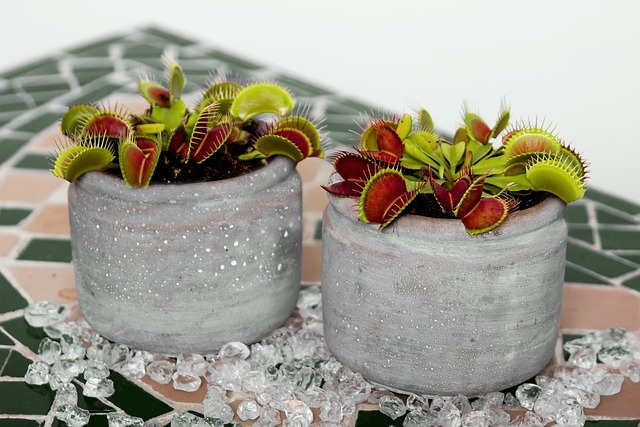There are plenty of carnivorous plants out there, each one with its unique way of capturing and digesting prey. But which one is the coolest?
In this blog post, we’ll take a look at some of the most interesting carnivorous plants around, from those that snap shut like Venus flytraps to those that lure insects into pitcher-shaped traps. So read on to find out which plant reigns supreme when it comes to being carnivorous!
Why Shouldn’t You Touch a Venus Flytrap?
Touching a Venus flytrap is not a wise decision because the plant evolved to react defensively when it senses that its prey has touched it. When connected, the Venus flytrap closes its leaves which takes energy from the plant and can lead to its death.
Furthermore, touching a Venus flytrap can damage its sensitive hairs, thus preventing it from capturing food normally and eventually leading to an unhealthy plant.
It’s best to admire these unique carnivorous plants from a distance so that we don’t interfere with the amazing natural process of trapping prey!
Can a Carnivorous Plant Hurt Humans?
Carnivorous plants are fascinating and quirky organisms that have adapted to nutrient-poor environments through means of eating small insects and other animals. While these plants may look intriguing, there is debate about whether they can potentially hurt humans.
Most carnivorous plants cannot survive on consuming human flesh, so the answer is generally no, though larger species such as the Venus Flytrap may be able to inflict a slight pinch from its powerful jaws.
It’s best to err on the side of caution when dealing with carnivorous plants and take proper safety precautions such as wearing gloves when handling them or keeping them away from young children.
Ultimately, although there will always be some risk involved with interacting with such captivating creatures, research shows that at least in most cases our worries should not extend to fearing a bite from one of these remarkable marvels of nature.
What Is the Rarest Carnivorous Plant?
The rarest carnivorous plant on Earth is the Nepenthes Attenborough, commonly called the “Giant Pitcher Plant”.
Native to the remote island of Palawan in the Philippines, this majestic species was only found relatively recently in 2007 by a group of botanists who had been searching an unexplored mountain range looking for discoveries.
The Giant Pitcher Plant has impressive adaptive qualities that ensure its survival – its towering stature and bright coloration help it catch both rain and sunlight, creating a homeostatic environment within its insatiable pitcher-shaped plant traps where it captures and digests local insects for sustenance.
While finding specimens of this species is incredibly difficult due to its limited natural habitat, hope remains as ongoing preservation efforts will help protect and continue the existence of this rare yet remarkable carnivorous plant.
What is the oldest carnivorous plant?
The oldest known carnivorous plant is the Arabidopsis thaliana, more commonly called “mouse-ear cress.” This unique plant can be found all around the world, but primarily grows in the northern European regions of France and Germany.
Not only is it one of the oldest known carnivores, but it is also an important model organism for generations of botanists. Mouse-ear cress uses its specialized leaves to catch insects that get trapped in hairs and secretions on their surfaces.
An interesting evolutionary adaptation, it has been found that these plants often produce sweet-smelling fragrances to attract their prey as well.
While life forms like rhinoceros beetles, fruit flies, and aphids are at risk of becoming prey to this ancient carnivore, studies have shown that mouse-ear cress has also adapted over time to feed off other sources such as bacteria or insect eggs when needed. Truly amazing!
What is the deadliest pitcher plant?
The NepenthesAttenboroughii, also known as Attenborough’s Pitcher Plant, is widely regarded as being the deadliest of all pitcher plants. Its sticky secretion and slippery walls form an almost inescapable trap that can quickly dispatch unsuspecting insects.
Because its natural habitat is only found on a single Mount Victoria summit in Palawan, Philippines, the Attenborough’s Pitcher Plant grows under extremely unique conditions where its predatory traps can reach stealthy heights and effectively ensnare any insect foolish enough to be pulled into its lure.
As such, this plant is considered one of the most impressive examples of carnivorous adaptation and has even inspired imitations that pale in comparison due to their more earthbound reach arms.
Conclusion
It is always so amazing to learn about the different plants that exist in our world, and carnivorous plants are some of the coolest. While all of these plants are pretty incredible, it seems like the Nepenthes Attenborough might just be the coolest carnivorous plant of them all!








